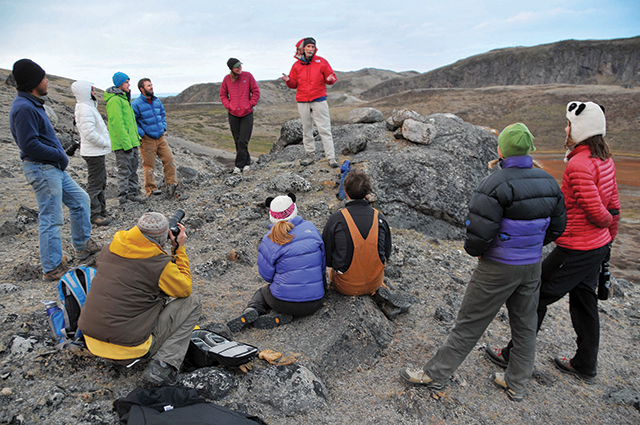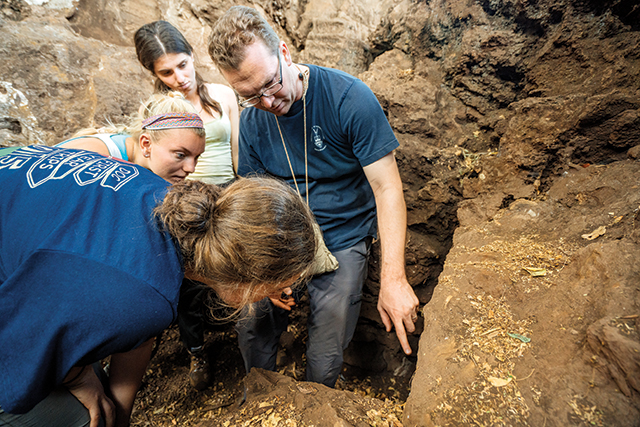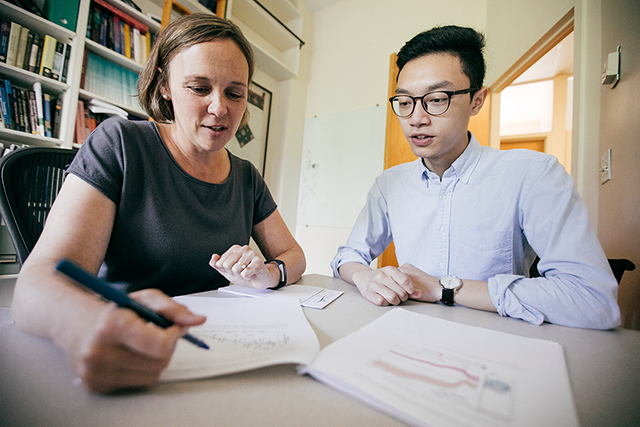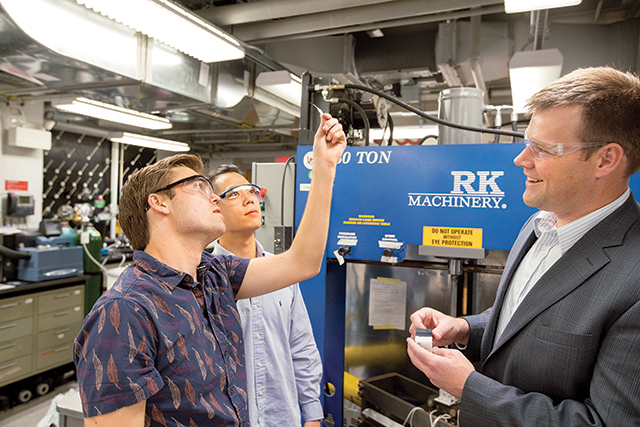Dartmouth Scholars in Action
Our faculty inspire students by bringing their scholarship into the classroom and providing students with opportunities for hands-on learning

Dartmouth’s teacher-scholars bring world-leading scholarship into the classroom and create opportunities for hands-on learning that push the boundaries of human knowledge. With your support through The Call to Lead campaign, Dartmouth will be the unparalleled leader in undergraduate liberal arts education—the first-choice institution of scholars who love to teach and students who dare to dream.Here are five examples of teacher-scholars who inspire students and change lives.
“An Incredible Mentor”
Ross Virginia, director of Dartmouth’s Institute of Arctic Studies, is an ecosystem ecologist whose work crosses the realms of science and policy. An internationally recognized expert in his field—a valley in Antarctica is named in his honor—Virginia has mentored many leading polar scientists and, in the Dartmouth liberal arts tradition, he includes undergraduates in his research.
“Working in Professor Virginia’s lab has helped me grow as a student and as a scientist,” says Alexandra Stendahl '19. “I’ve learned how the process of science works, from asking a question to publishing your work. Conducting research with him in Greenland, I learned about methods in the field and experienced how data are collected. Professor Virginia is an incredible mentor.”

Working in Professor Virginia’s lab has helped me grow as a student and as a scientist.
The Next Generation
In 2016, Mary Lou Guerinot, professor of biological sciences, was elected into the National Academy of Sciences. At most universities, faculty members receiving such a prestigious honor would never teach an undergraduate course again. Not at Dartmouth. Guerinot continues to teach courses at all levels, and she and her team of researchers are focused on iron deficiency—a global problem affecting three billion people.
“An essential part of my job is training the next generation of scientists,” says Guerinot. “My research program provides opportunities for undergraduates, graduate students, and postdoctoral researchers to work as a team toward our goal of providing sustainable solutions to micronutrient malnutrition. We’re tackling a big problem, and we’re all in it together.”

We’re tackling a big problem, and we’re all in it together.
Out in the Field
“Out of every fossil that’s found, there’s a 1-in-10,000 chance that it’s early human,” says Jerry DeSilva, associate professor of anthropology. Those are long odds, but Keira Byno ’19, Julia Cohen ’18, and Kathleen Li ’17 beat them in late 2016 when they joined DeSilva for a three-week field trip in South Africa as part of his Anthropology 70 course: Experiencing Human Origins and Evolution. The students discovered the pelvis bone of a two-million-year-old Australopithecus sediba female while excavating in Malapa, northwest of Johannesburg.
“It shows the importance of being out in the field—of getting your hands dirty,” says Cohen. “In one day, we learned how this one piece of bone can contribute to our entire human lineage. That’s experiential learning at its best.”

That’s experiential learning at its best.
Present at the Creation
In the summer of 2017, Hung Nguyen ’18 thought he was assisting Professor of Economics and Niehaus Family Professor of International Studies Nina Pavcnik with research into the impact of international trade on developing nations for a possible journal article.
Due to a strict embargo on sharing information, Pavcnik couldn’t tell Nguyen that he was, in fact, compiling data for a paper she’d present at the Jackson Hole Symposium, attended by more than 40 central bankers from around the world, including then-Federal Reserve Chair Janet Yellen and European Central Bank President Mario Draghi.
“I had a chance to see this project progress from the idea generation stage all the way to the finished product,” says Nguyen. “This sort of research experience is what I think of when I think about Dartmouth.”

This sort of research experience is what I think of when I think about Dartmouth.
Where Students Bring Ideas
In 2014, two engineering sophomores wondered if they could develop a better material to cushion and extend the life of replacement joints. Hayden Chun ’16 TH’17 and David Cook ’16 TH’17 approached Doug Van Citters '99 TH'03 TH'06, who researches joint replacement technology. He agreed to be their adviser and helped them secure resources from an undergraduate research fund established by Gerald Kaminsky ’61.
Working with Van Citters, the students created an electrically conductive graphene-polymer compound that loses conductivity as it is stressed—so its properties can be monitored. Research on this technology continues today, with significant grant support provided by the National Science Foundation.
Chun, Cook, and Van Citters have applied for a patent, now pending, and have had a manuscript about their research accepted by the Journal of Materials Engineering and Technology. Joining the trio in the patent application is professional Nordic skier and Van Citters’ lab alumnus Eric Packer ’12 TH ’12, who developed some of the preliminary technology underlying this work.
“Data from David, Hayden, and Eric were instrumental in securing a sizable federal grant and may substantially change the direction of my laboratory research,” says Van Citters. “I love working with students, and they give back to me.”

I love working with students, and they give back to me.